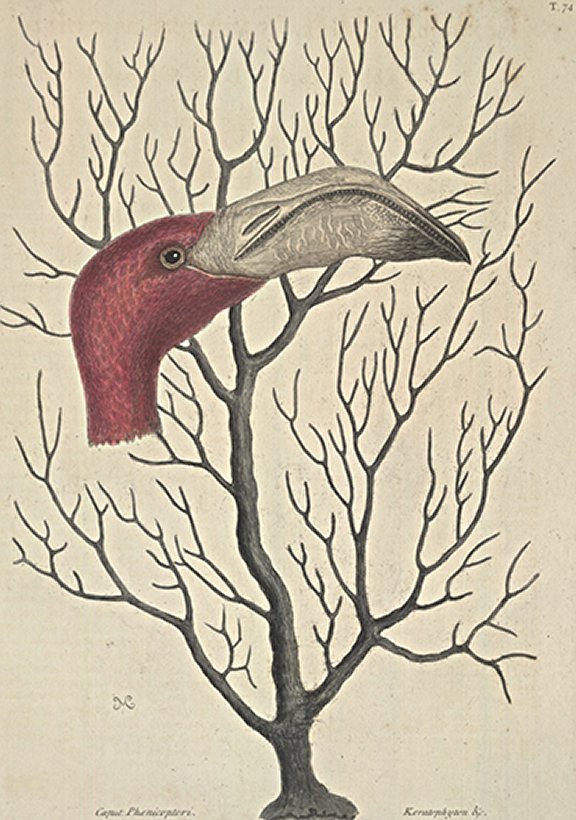Plate Number: I 74Caput Phoenicopteri Naturalis Magnitudinis: The Bill of the Flamingo in its full Dimension I Need not attempt to describe the Texture of the Bill otherwise than Dr. Grew has done in his Mus. R. Sac. p. 67. His Words are these: The Figure of each Beak is truly Hyperbolical. The upper is ridg'd behind; before, plain or flat and pointed like a Sword, and with the Extremity bended a little down; within, it path an Angle or sharp Ridge, which runs all along the Middle, at the Top of the Hyperbole, not above a Quarter of an Inch high. The lower Beak in the same Place above one Inch high, hollow and the Margins strangely expanded inward, for the Breadth of above a quarter of an Inch, and somewhat convexly. They are both furnished with black Teeth, as I call them, from their Use, of an unusual Figure; Scil. slender, numerous, and parrallel, as in Ivory-Combs; but also very short, scarce the eighth Part of an Inch deep. An admirable Invention of Nature; by the Help of which, and of the sharp Ride abovementioned, this Bird holds his slippery Prey the faster. When they feed (which is always in shallow Water) by bending their Neck, they lay the upper part of their Bill next the Ground, their Feet being in continual Motion up and down in the Mud; by which Means they raise a small round Sort of Grain, resembling Millet, which they receive into their Bill. And as there is a Necessity of admitting into their Mouths some Mud, Nature has provided the Edges of their Bill with a Sieve, or Teeth, like those of a fine Comb, with which they retain the Food, and reject the Mud that is taken in with it. This Account I had from Persons of Credit; but I never saw them feeding my self, and therefore cannot absolutely refute the Opinion of others, who say they feed on Fish, particularly Eels, which seem to be the slippery Prey Dr. Grew says the Teeth are contrived to hold. The accurate Dr. James Douglass hath obliged the World with a curious and ample Description of this Bird in Phil. Trans. No 550. Keratophyton fructis Specie, nigrumThis Species differs from the former, in that it is black, and hath a large Stem like the Trunc of a Tree, which rises up thro' the Middle of the Plant, and sends out several larger Branches, from which arise the smaller Twigs, which are more crooked and slender than those of the proceeding: So that in the Whole it resembles a Tree without Leaves. This grows to Rocks in the same Places with the preceeding. |